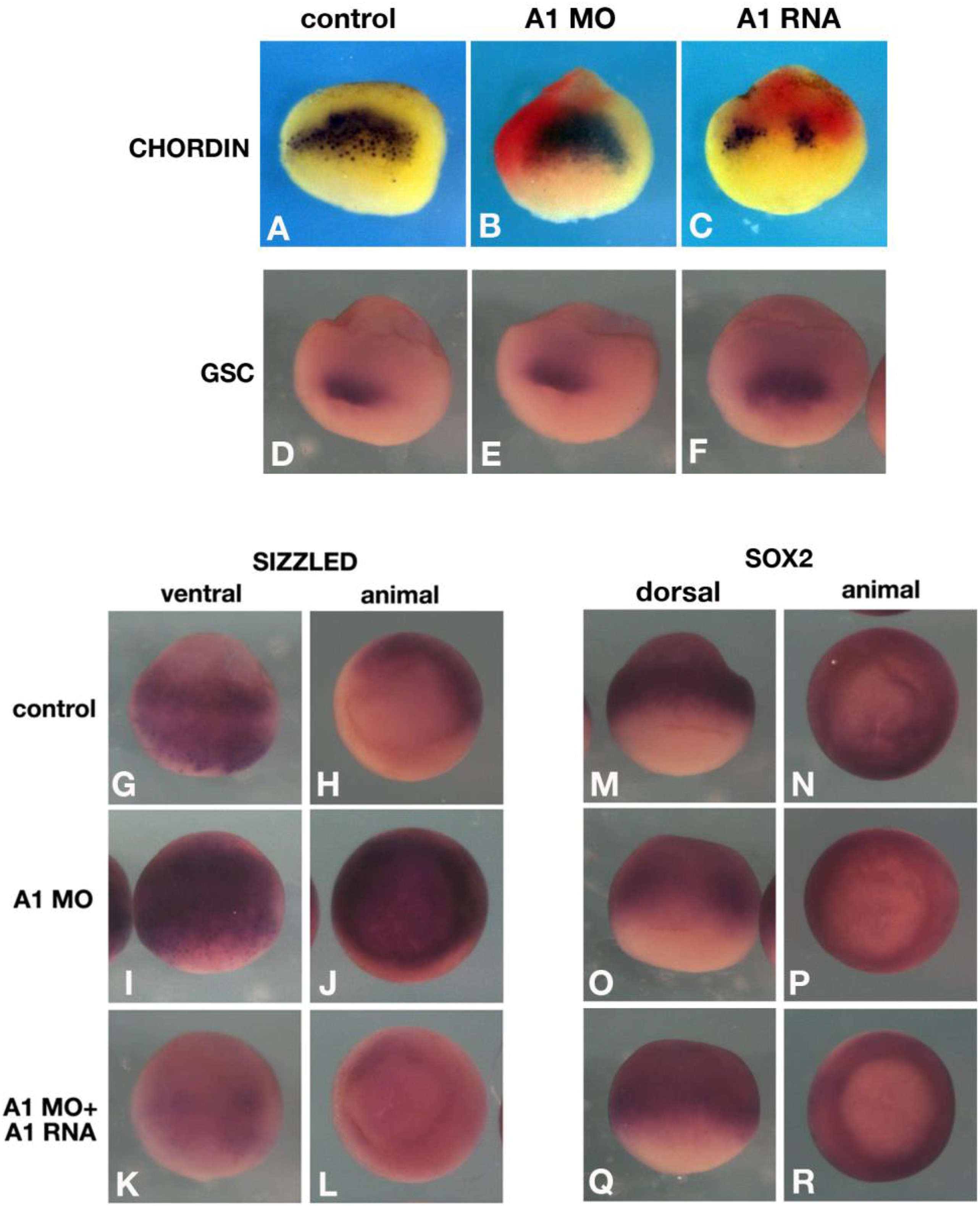Fig. 2 Apcdd1 regulates expression of both positive and negative targets of BMP signaling in Xenopus embryos. In situ hybridization of morpholino-depleted (A1MO), or Apcdd1 overexpressing embryos. Embryos were injected at the 4-cell stage dorsally (A-C, double in situ hybridization for chordin and LacZ RNA as injection marker, in red), or 1 ?cell stage (D?R). Control embryos were injected solely with LacZ RNA (1 ?ng). A-F. Spemann organizer genes: chordin is not affected by apcdd1 depletion (B) (n ?= ?18 embryos), but inhibited by apcdd1 RNA (A1 RNA) overexpression (n ?= ?23 embryos), consistent with the inhibition of the maternal, dorsal Wnt pathway; gsc is unaffected by either treatment (n ?= ?15 and n ?= ?12 embryos, respectively, E, F). G-L. The ventral marker and BMP target sizzled is expanded by Apcdd1 depletion (n ?= ?23, I, J), and restored by expression of a MO-resistant apcdd1 RNA (n ?= ?21 embryos, K, L). M-R. The early neural marker and negative BMP target sox2 is inhibited by Apcdd1 depletion (n ?= ?27 embryos, O, P, arrows in O indicate a hole in the ventral expression pattern), and partially restored by expression of Apcdd1 RNA (n ?= ?17 embryos, Q, R).
Reprinted from Developmental Biology, 464(1), Vonica, A., Bhat, N., Phan, K., Guo, J., Iancu, L., Weber, J.A., Karger, A., Cain, J.W., Wang, E.C.E., DeStefano, G.M., O'Donnell-Luria, A.H., Christiano, A.M., Riley, B., Butler, S.J., Luria, V., Apcdd1 is a dual BMP/Wnt inhibitor in the developing nervous system and skin, 71-87, Copyright (2020) with permission from Elsevier. Full text @ Dev. Biol.

